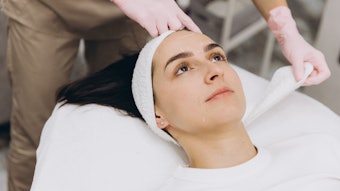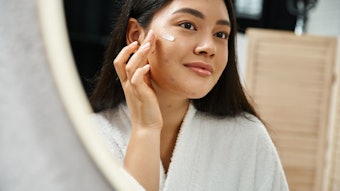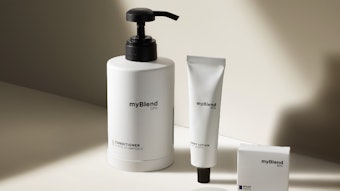
In the ever-evolving world of beauty and aesthetics, new trends and techniques are always emerging. With the popularity and widespread use of social media, we can often witness the latest skin care routine, treatment or product become an instantaneous must-have among millions of viewers.
There are currently countless user videos on platforms like TikTok, Instagram and YouTube sharing first-hand experiences, before-and-after results and offering tips and tricks that can captivate almost anyone seeking to enhance their appearance. In our looks-conscious society, new ways to look younger, have better skin, or a tighter jawline are an enticing and welcomed possibility. In the sphere of facial plastic surgery, I have yet to see a beauty trend that hasn’t been embraced with open arms by individuals hoping to find the next best thing. One such trend that has recently garnered attention is “skin flooding.”
Related: Love It or Leave It: Professional Advice on TikTok Skin Care Trends
Understanding Skin Flooding
So, what exactly is skin flooding? It is a technique that involves strategically saturating the skin with a high concentration of hydrating ingredients. The process aims to replenish the skin's moisture barrier, lock in water and create a plump, dewy complexion. It is achieved through the application of multiple layers of lightweight serums, essences or toners (from thinnest to thickest) each rich in humectants and nourishing elements. This multi-step approach ensures deep hydration and can improve the skin's ability to retain moisture, resulting in a healthy and radiant appearance. It is suitable for all skin types, but can be especially beneficial for very dry skin.
As a facelift expert with over 15 years of experience in the field, I tend to view the latest beauty phenomena with an open mind, yet still remain cautiously optimistic. Over time I’ve seen many trends come and go. Some proved to truly deliver on their claims and elevated self-care routines and anti-aging prevention for many people. For example, in recent years, tretinoin (or prescription retinoid) has become a buzz words for its ability to improve skin, reduce and prevent wrinkles and increase collagen production, among its other superpowers. It still remains just as popular today. Another solid example that comes to mind is the hydration sensation: hyaluronic acid.
On the other hand, some beauty obsessions with lofty promises failed to live up to the hype and eventually fizzled out. There are certainly enough examples, but that’s a topic for another article.
Skin Flooding and Facelift
I can say when patients come to my practice, they are interested to turn back the hands of time. They are usually unhappy with their changing looks and are seeking to address their facial aging concerns. In this instance, plastic surgery can certainly help. From tightening loose skin and getting rid of jowls, to creating a sharp jawline and smooth neck contour and beyond, the facelift procedure can do wonders to rejuvenate one’s appearance. Some patients can look 10 or even 15 years younger after such a procedure. However, this type of surgery primarily focuses on addressing issues related to skin laxity and the underlying structures of the face. While a facelift can certainly improve the appearance of wrinkles and sagging skin, it does not directly target the texture and quality of the skin itself. This is where a skin hydration method such as skin flooding could be very useful.
By saturating the skin with hydrating ingredients, the skin flooding method focuses on improving the overall health of the skin, which, in turn, could result in visibly better texture, smoothness and a more youthful appearance. Oftentimes, following a facelift patients are more mindful of taking better care of their skin and taking extra precautions to preserve their results as long as possible. While wearing sunscreen is one of my top recommendations to protect surgical incision lines from the sun’s rays, as well as prevent premature aging, a strong hydration treatment can be a great complimentary addition to the skin care routine for an overall refreshed look.
Related: Top 5 MedSpa Trends in 2023
Benefits Of Skin Flooding
Of course, not everyone needs a facelift. Some people are interested simply to maintain their skin’s good quality or improve it without the need for surgery. Skin flooding could offer several benefits. First, it may be able to address common issues such as dryness, flakiness and dullness by boosting the skin's hydration levels. By infusing the skin with an abundance of moisture, it could help to restore the skin's natural balance, especially in instances of irritation or over-exfoliation.
Additionally, when the skin is well-hydrated, it functions optimally, facilitating the delivery of essential nutrients and promoting efficient cellular processes. This can contribute to enhanced elasticity as well as a reduction in the appearance of fine lines and wrinkles. The use of hydrating ingredients might also be beneficial for individuals with sensitive skin by helping to soothe inflammation and calm redness. Furthermore, the gentle and gradual approach of layering products used in skin flooding might allow the skin to better absorb the ingredients, thus further enhancing its overall supple appearance.
Incorporating Skin Flooding
To incorporate the skin flooding trend into your client's skin care routines, it is important to understand the steps involved and choose suitable products. This customization ensures that each person receives a personalized skin care experience, addressing their specific concerns and goals. Here's a step-by-step guide to provide your clients:
- Cleanse. Begin by cleansing your face to remove any impurities or residual makeup. A gentle cleanser that won't irritate or strip the skin of its natural oils would work best.
- Tone. After cleansing, apply a hydrating toner or a thermal water spray to prep the skin for the "flooding" process.
- Layering. The key to skin flooding is layering serums and essences. Start with the thinnest consistency product such as hyaluronic acid and gradually build up. Make sure your skin is still slightly damp before applying hyaluronic acid for best results. Apply each layer with a gentle pressing motion, allowing each product to fully absorb before moving on to the next.
- Moisturize. Seal in all the hydrating layers with a nourishing moisturizer. Look for products that contain emollients and occlusive ingredients to lock in moisture. If using the skin flooding method in the daytime, finish your routine with a broad-spectrum sunscreen.
- Hydrating Masks Incorporate hydrating sheet masks or overnight masks once or twice a week for an added boost of hydration. These masks provide an intense moisture surge and can be a valuable addition to your skin flooding routine.
People with oily or acne-prone skin should be careful when choosing the correct products and limiting skin flooding to a few times a week to prevent clogged pores or breakouts. For those with dry complexions, this technique could be used more frequently or even daily.
Related: 5 Resons You Can't Miss Our "Understanding Wellness" Research Report
A Flooding Trend
As a facelift expert and experienced authority in facial rejuvenation, I can say I’m always excited by the emergence of a new and promising trend in the realm of skin care. Skin flooding might offer a multitude of benefits for individuals of any age who desire a well-hydrated and radiant complexion. While a facelift can certainly achieve a comprehensive facial rejuvenation, I appreciate the potential of a good skin hydration method to enhance the overall appearance and vitality of the skin.










